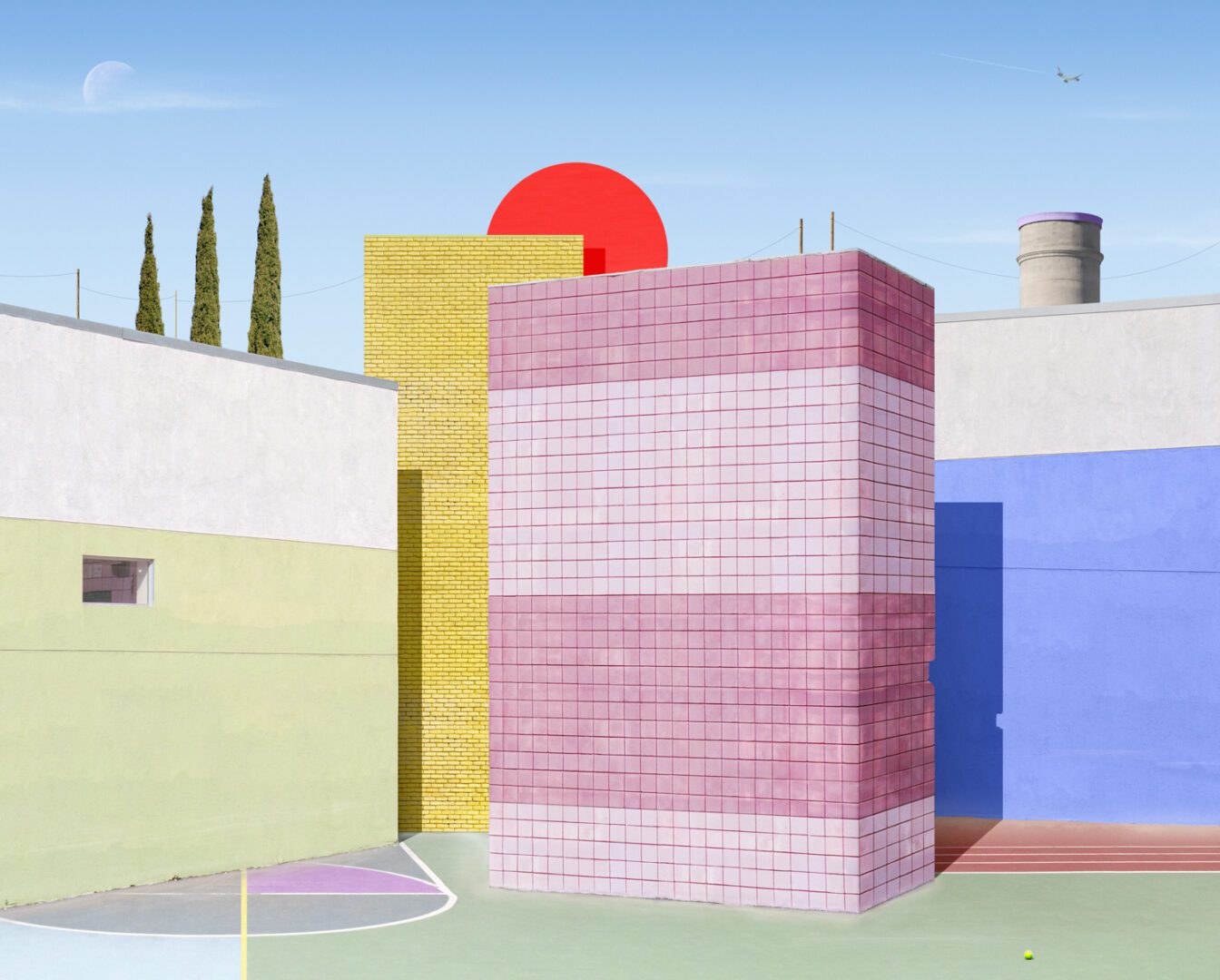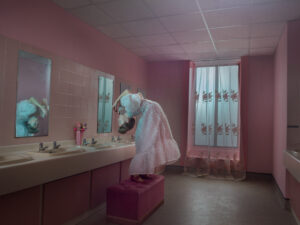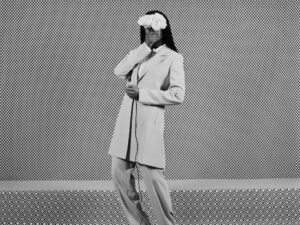The term “New Topographics” was first coined in 1975 by curator William Jenkins. He was describing a group of American photographers, including Robert Adams and Lewis Baltz, who featured in the landmark show Photographs of a Man-Altered Landscape at New York’s Museum of Modern Art. These were artists who depicted everyday scenes with a sense of detachment and banality; their subjects were suburban sprawl and industrial architecture – elements of the built environment that had, up until then, been overlooked. Now, nearly 50 years on, their influence remains palpable. George Byrne (b. 1976), a Los Angeles-based Australian artist, is one of the best-known creatives working in this space right now. Starting with film photographs taken on a Pentax 67 camera, Byrne’s process is one of addition, subtraction and collage, revealing a new image by transforming everyday landscapes and surfaces into painterly abstractions. In Synthetica, a solo exhibition opening at Show Gallery, glimpses of Los Angeles’ urbanity are intertwined with snapshots of epic landscapes and Americana from Byrne’s road trips across the country. Pieces of Daytona Beach, Death Valley, Yellowstone National Park and Miami’s Cuban quarter are amalgamated into dreamscapes, often decentralised with no discernible location.

A: Tell us about how you got into working behind the lens – where did it all begin?
GB: It was raw curiosity that led me into photography. I Ioved drawing and painting as a kid, but when my older sister Alice started doing courses in black-and-white photography at high school, that piqued my interest. She was making these beautiful, ethereal landscapes, and her cameras and prints were always lying about the house. I guess I thought “I wouldn’t mind having a crack at that.” I started to borrow her Canon AE1 + 50mm lens camera a bit, taking pictures of my life, my neighborhood and the people in it. I just felt comfortable with it; I enjoyed the immediacy and the quick results. I recall thinking, from the very start, that photography is just as much an art as any other visual medium.

A: What’s the focus or message behind your latest exhibition at Show Gallery?
GB: I made the decision to do an exhibition that wasn’t grounded purely in Los Angeles, for a start. There are hints of LA and random urban junk space, but there is a twist. I’ve also blended in some natural landscapes so as to decentralise the works. I wanted the locations to feel displaced and jumbled up. I think the message is: dreams, magic, disassociation. It’s part diary entry, part escapism. I’m still pressing to make epic scenes out of everyday spaces, but I’m also pointing the lens back to nature in a way I haven’t before.

A: If you could only show us one piece from the show, which would it be, and why?
GB: I’d show you Mural Wall, Venice (2024, above). This composition juxtaposes an old peeling mural backdrop of towering redwoods with the more mundane elements of urban life. There is complexity posing as simplicity, which in many ways is the theme of the show. It’s about duality and layers. This image reflects the series’ core idea: blending natural and artificial to speak to a hidden reality behind the physical world.
A: Who – or what – have been your biggest creative inspirations?
GB: I’ve found the city of Los Angeles to be my biggest creative inspiration. When I moved here in 2011 the landscape really took my breath away. It is so mysterious.

A: What’s been the highlight – or highlights – of your career so far?
GB: There are so many highlights. I feel very lucky to have had the career I’ve had so far. I’d say one of the biggest highs came early on, when I had my first solo exhibition, Local Division, with Olsen Gallery in Sydney in 2016. It was the first time I’d produced my images at a large scale.
A: Do you think you have a “signature” technique or approach? What is it?
GB: My style is quite minimal and precise in its composition, with a lot of attention to detail. I’m also known for my use of collage and various forms of manipulation, but I never draw attention to it. I bury the lead.
A: If you could do any other job, or be an expert in any other field, what would it be?
GB: Professional musician. Music is my other great love.

A: Who are some of your favourite contemporary or emerging artists?
GB: In no particular order: Robert Moreland, Patricia Treib, Austin Weiner, Brian Lotti.
A: Is there anything you hope audiences take away from this show?
GB: I hope that this series inspires people to look at the ordinary world around them in a different way. That would be the greatest compliment.
A: What are you working on right now? Anything else for us to look forward to?
GB: I’m working on a new series of paintings and about to release some music – stay tuned!
Synthetica is at Show Gallery, Los Angeles, from 13 June – 14 July.
Image Credits:
1. George Byrne, Four Walls, 2024
2. George Byrne, Red Fence, 2024
3. George Byrne, Rainbow Wall, 2024
4. George Byrne, Mural Wall Venice, 2024
5. George Byrne, Desert Collage, 2024
6. George Byrne, Monument, 2024





